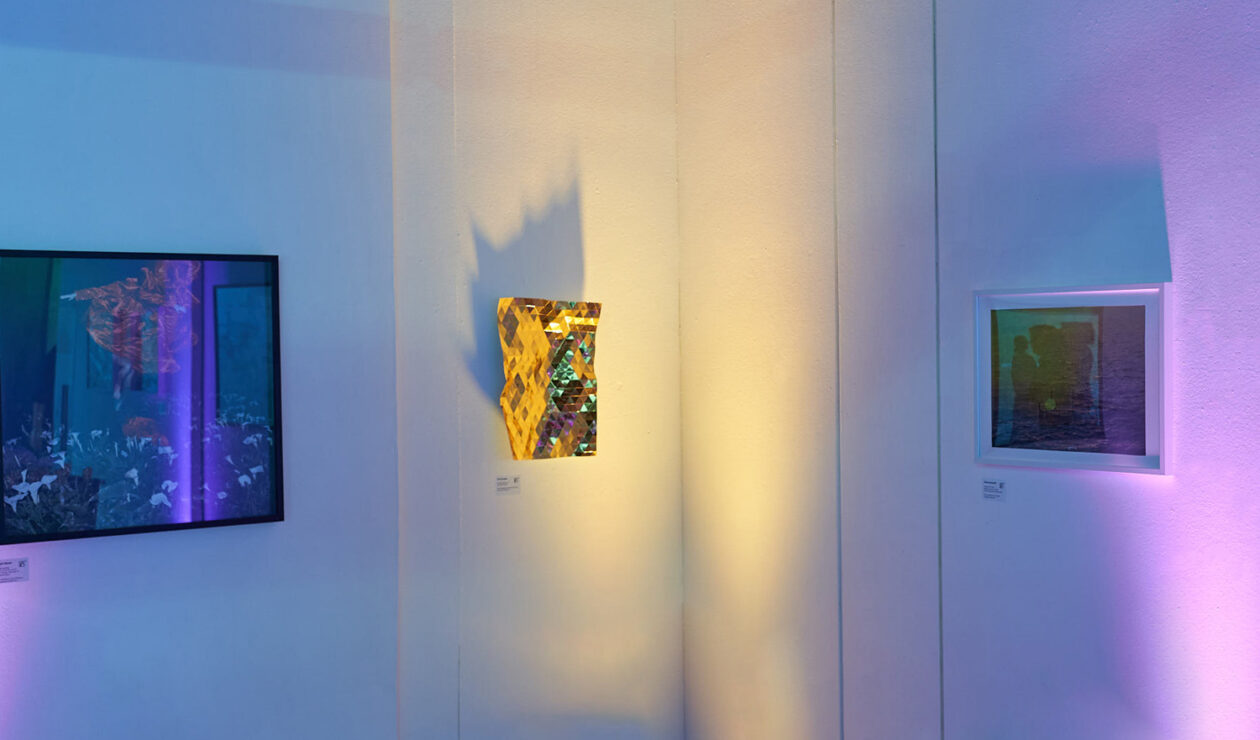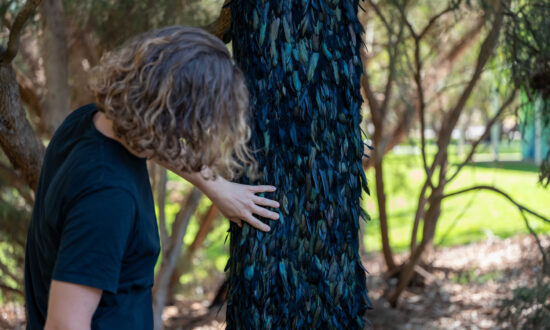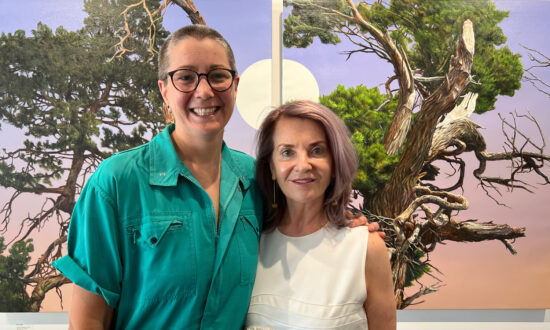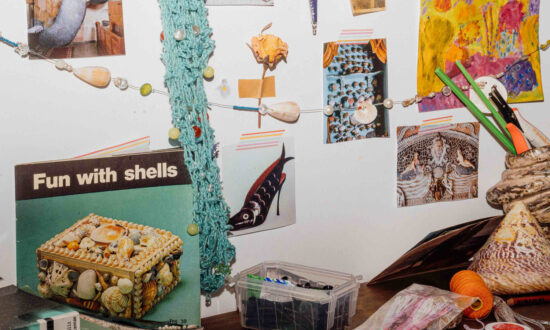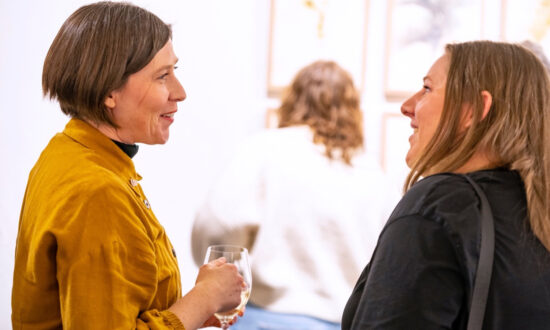This year marks a significant milestone for the Helpmann Academy. Set up in the early 1990s in honour of South Australia’s iconic actor and dancer Sir Robert Helpmann, the not-for-profit organisation is celebrating 30 years of supporting local creatives to pursue successful careers.
To mark the occasion, the Helpmann Academy will showcase throughout the year the incredible depth of creative talent that it has supported across the last three decades through diverse programming and professional development opportunities.

Installation view of Wilson Jedd Adams’ Yes Man, 2019, collection of UniSA. Photo: Sam Roberts
To kickstart the celebrations, a curated selection of artworks from artists who have been part of past Helpmann Academy Graduate Exhibitions was presented on the opening night of this year’s show. Included in the satellite pop-up exhibition were works by Wilson Jedd Adams, Alice Blanch, Tom Borgas, Teresa Busuttil, Dr Thomas Folber, Joseph Häxan, Kate Little, Chris Siu and Emmaline Zanelli.
Together these works were sourced from the University of South Australia’s art collection, the private collection of Helpmann Academy CEO Jane MacFarlane, and from this writer’s own collection.
In bringing together these works, the exhibition revealed stories of the enduring impact of the Helpmann Academy, and showed how success in the arts can take many forms. Each artist has gone on to walk their own journey to “success”.
One of the more recent artists to have exhibited in the 2023 graduate exhibition, Teresa Busuttil (University of South Australia), has in an incredibly short time gone from strength to strength. Last year, Busuttil’s experience as the recipient of the 2023 Helpmann Academy ACE Studio Residency was recounted in the story “How to ACE a studio residency”.
After a successful pitch to exhibit at Firstdraft in Sydney, and a strong presentation of works at the ACE Studios: 2023 exhibition, Busuttil has now gone on to be selected as an artist for the inaugural Malta Biennale.
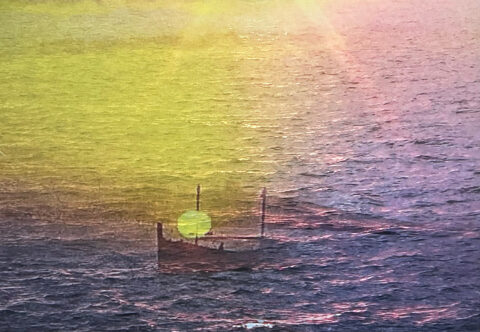
Teresa Busuttil, nixtieq li kont hawn (wish you were here), 2022.
“Being awarded the Helpmann Academy ACE Studio Residency in 2023 was a catalyst for the work I am currently making in Malta,” she says.
“Taking part in the inaugural Malta Biennale is incredibly exciting – I’m facing new and unique challenges as I live and work in Malta to create new work titled Frejgatina for Can You Sea?: The Mediterranean as a political body.”
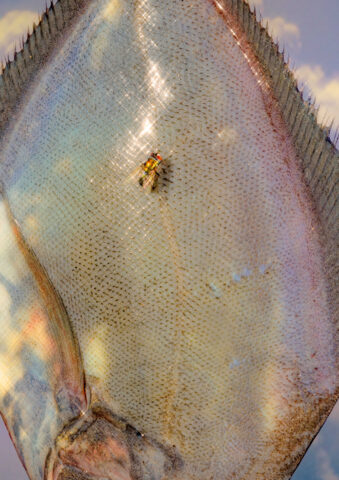
Emmaline Zanelli, from the series Semaphore, 2022.
One of the joys in curating works for exhibition is the opportunity to tease out relationships between artworks – and also the artists behind them. Accompanying Busuttil’s work nixtieq li kont hawn (wish you were here) was an image from the series Semaphore by well-loved South Australian photographer Emmaline Zanelli. Longstanding friends Busuttil and Zanelli have supported one another’s careers for many years, a relationship that is testament to the power of community in supporting artists to prosper.
Since exhibiting in the 2017 and 2018 graduate exhibitions, Zanelli (Adelaide College of the Arts, Flinders University) has gone onto become a nationally regarded artist. She has exhibited in galleries across the country and has had work screened at Arles Photography Festival in France. Her work has been published in the British Journal of Photography, Artlink Australia, VAULT and Suddeustche Zeitung magazine. In 2022, she was selected as the winner of the Churchie Emerging Art Prize, which recognises some of the most significant emerging artists in Australia.
“The Helpmann Academy Graduate Exhibition was a great way to kickstart my career after leaving art school” says Zanelli. “Up until the Graduate Exhibition I didn’t have a camera of my own, but I won the Watson Award, which supported me to buy my first camera – which had a massive impact for my work.
“Since 2016, I have been part of exhibitions and projects around the country and overseas. I can’t stress enough the importance of support for visual artists as they start their careers, as it can be a tough journey.”
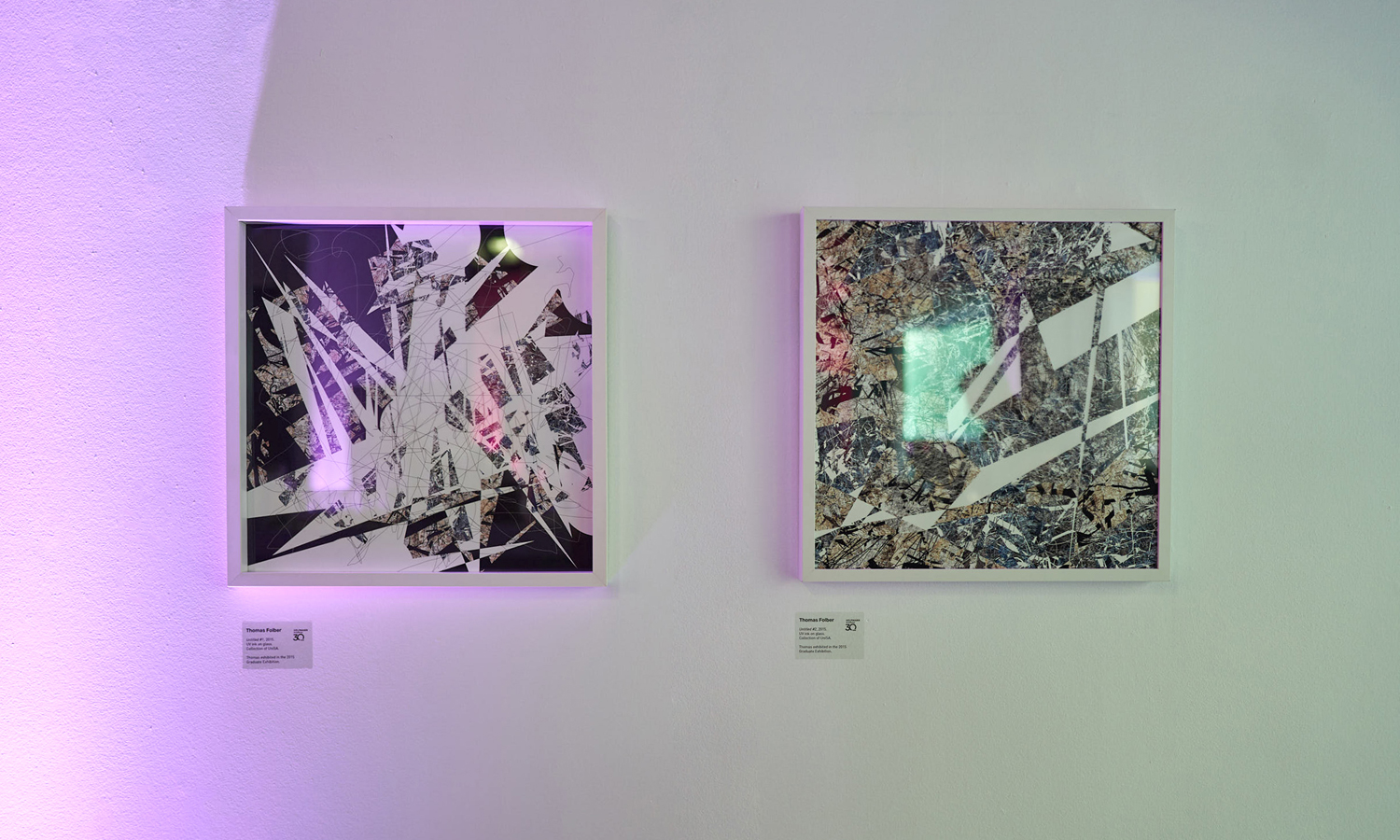
Installation view of Dr Thomas Folber’s Untitled #1 and Untitled #2, 2015; collection of UniSA. Photo: Sam Roberts
A career in the visual arts can lead individuals along distinctly different paths. The artworks by Dr Thomas Folber, which were first exhibited in the 2015 Graduate Exhibition before being acquired by the University of South Australia, remind us that success has many faces. Dr Folber is the University of South Australia’s first student to have gone on to complete a PhD from starting with its Foundation Studies program.

Get InReview in your inbox – free each Saturday. Local arts and culture – covered.
Thanks for signing up to the InReview newsletter.
The UniSA Foundation Studies is a fee-free six-month program aimed at students with no previous qualifications, or for school leavers without an ATAR. Over 13 years, Dr Folber worked his way towards the completion of a visual arts PhD in 2023 – a powerful and inspiring feat for someone who had not completed high school.
In Melissa Keogh’s article “From Foundation Studies to PhD and beyond”, Dr Folber says: “Having not completed high school, I was feeling a bit of imposter syndrome regarding taking on a PhD. I have to say that the UniSA staff, and my family and friends, were incredibly generous with their encouragement and support. Their genuine belief in my abilities inspired me to feel like I could take on the challenge, and my partner Maggie has been especially supportive.”

Chris Siu, Untitled #2, Hong Kong, 2021. From the series Then We keep Living Vol. 1.
The Helpmann Academy Graduate Exhibition 2024 is on at SASA Gallery, UniSA Kaurna Building, City West, until March 22. It is open from Wednesday to Saturday, 10am-4pm. Read InReview’s review of the exhibition here.
Henry Wolff is a visual artist and arts worker living and working on Kaurna Country.
Support local arts journalism
Your support will help us continue the important work of InReview in publishing free professional journalism that celebrates, interrogates and amplifies arts and culture in South Australia.
Donate Here
